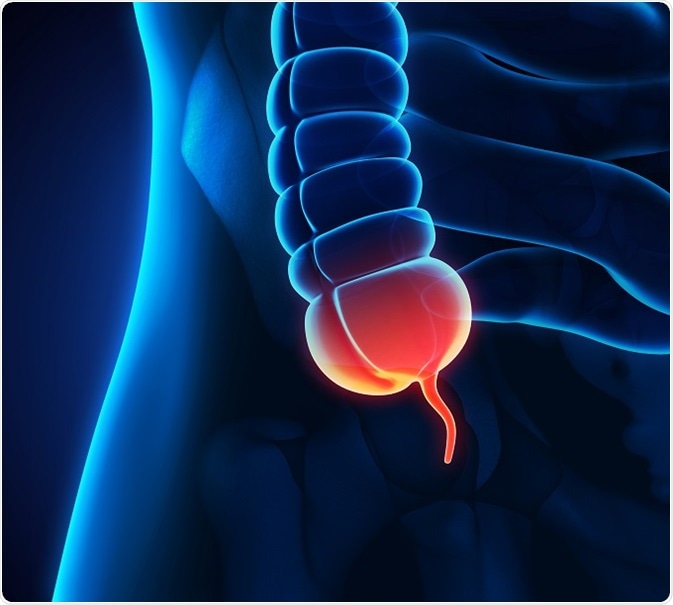Launching 1st March 2023. Also check out: https://www.thailandmedical.news/
Cancers of the appendix are an extremely rare and deadly disease found in the abdominal region. The first section of the large intestine or colon is the appendix, which is a pouch-like tube attached to the cecum. The average length of the appendix is 10 centimeters (about 4 inches). It is considered to be a part of the alimentary canal.

Credit: Nerthuz/Shutterstock.com
In humans, the function of the appendix is unknown, even though it is believed to conceivably play a part in the immune system. Generally, it is considered tobe a part of the lymphatic, exocrine, or endocrine system.
Appendix cancer occurs very rarely. Cancer of the appendix might have resulted to motivate appendicitis or breach of appendicitis. In most of the cases, this can be described as a first symptom of appendix cancer.
Depending on the types of cells within the tumor, appendix cancers are classified into different types, among which pseudomyxoma peritonei (PMP) is one.
The term pseudomyxoma peritonei was first discovered in 1842 by Rokitansky. Due to the aperture of ovarian pseudomucinous cystomas, PMP was first used by Werthin 1884 to illustrate enormous intraperitoneal accumulation of gelatinous pseudomucin.
PMP is a relatively rare type of cancer that is simply converted to define “false mucinous tumor of the peritoneum.” In most of the cases, it originates in the appendix in the ovary. In rarer incidences, it can arise from other parts of the body, such as the bowel or the bladder.
In the case of PMP that arises in the appendix, the tumor generally begins developing from the inner lining of the organ as a small, slow growth, which can be termed as a polyp. The primary stage of this tumor does not produce any symptoms and it is barely discovered. When it gets larger, it develops through the wall of the appendix into the abdominal cavity where more tumors are formed.
Then, the mucinous tumor cells are allowed to get attached to the peritoneum, and they may also get linked to some of the abdominal organs such as the spleen, diaphragm, liver, ovaries, and uterus.
These cancerous cells produce mucus, which is collected in the abdomen as a jelly-like fluid called mucin. As it accumulates in huge quantities, it leads to symptom generation. This excess mucin is then allowed to run through the abdominal space where it, unfortunately, encircles the digestive organs, such as the colon, small bowel, and liver, leading to their malfunctioning.
Compared to other types of digestive cancers, PMP is a very slow growing disease.
There is no subtype identified for this kind of tumor. However, a few classes do exist based on the characteristic of the disease.
PMP can be classified into three common categories based on the grade of the disease.
The occurrence of PMP is one per one million per year and it can be found in two out of every 10,000 cases of people who have gelatinous ascites. It is very difficult to diagnose this condition. The median age of people affectedby this disease is nearly 54, and in most of the cases, the disease is identified accidentally during the course of treatment carried out for some other medical problems.
Sources